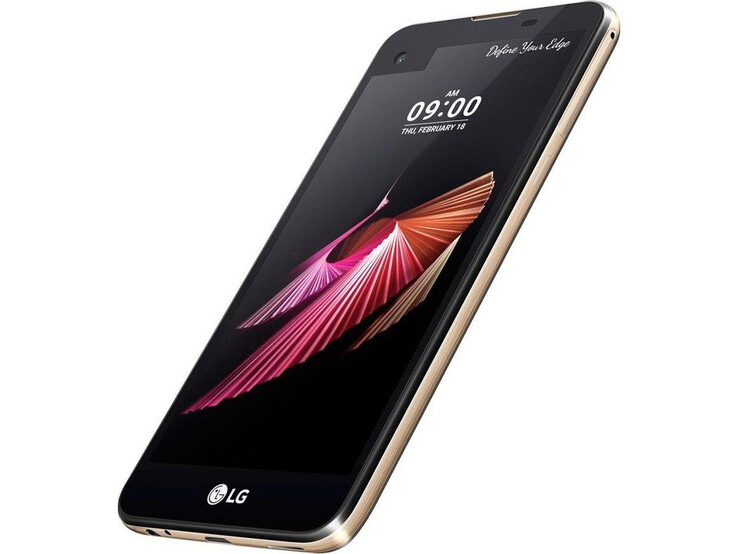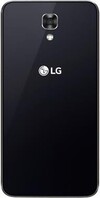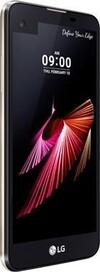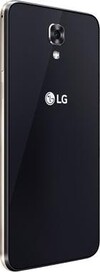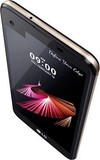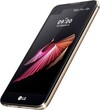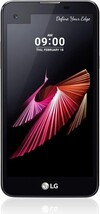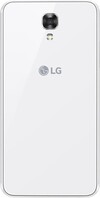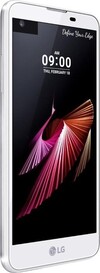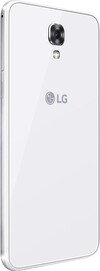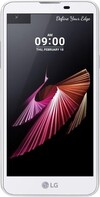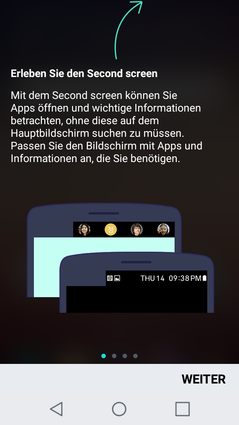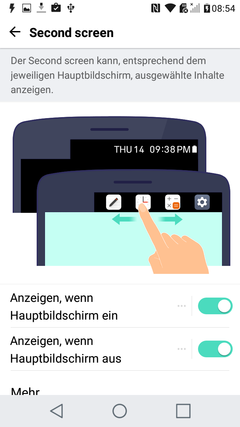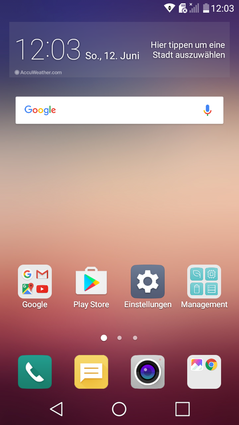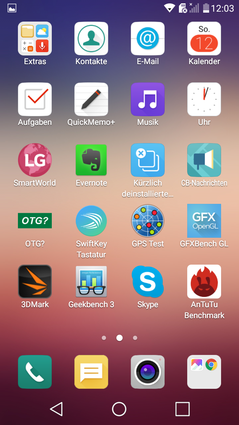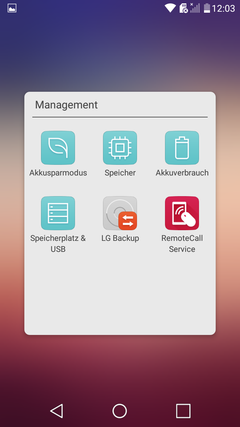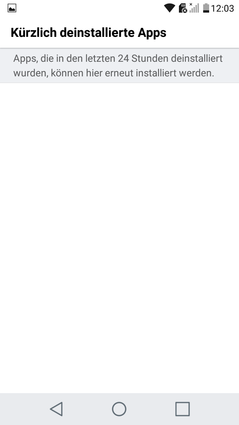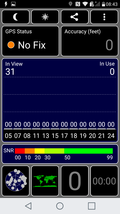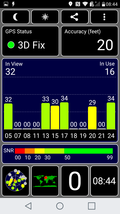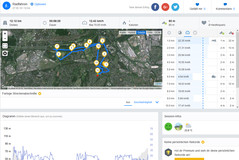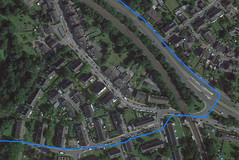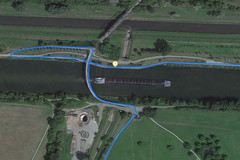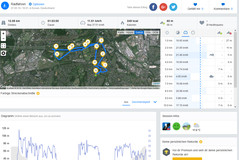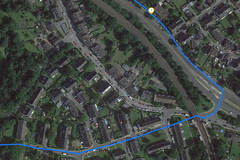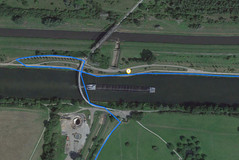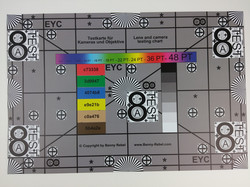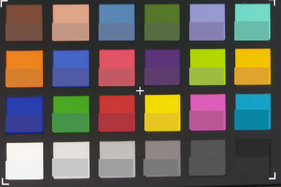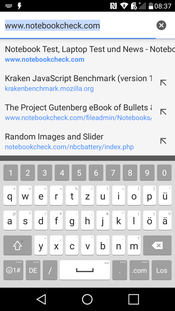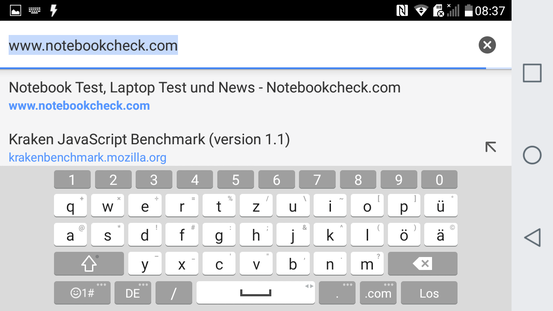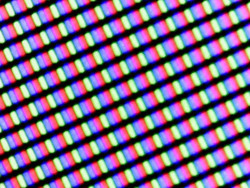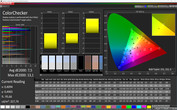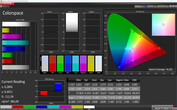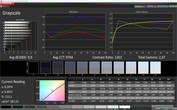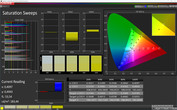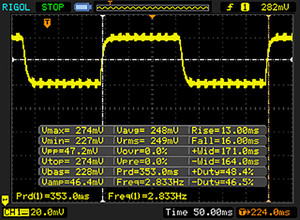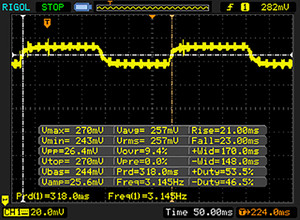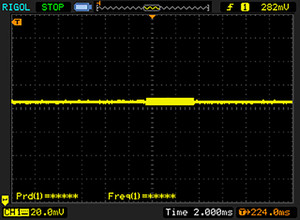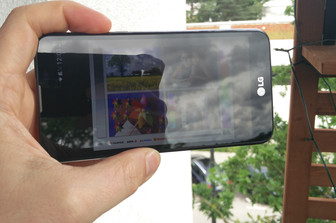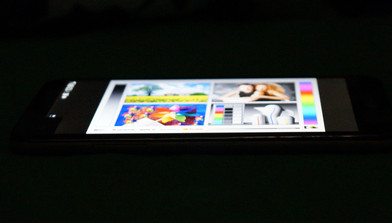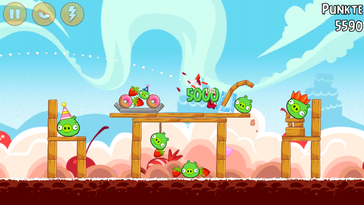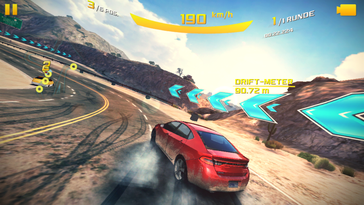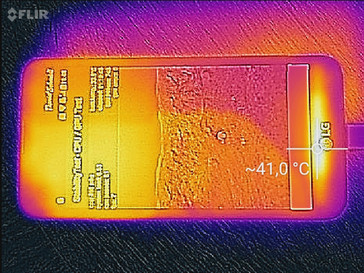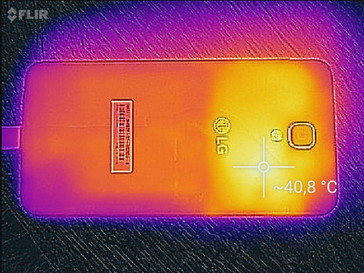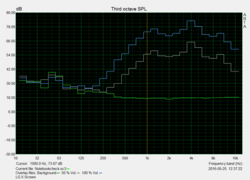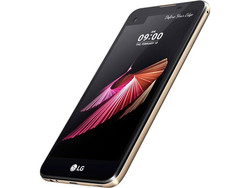LG X Screen Smartphone Review
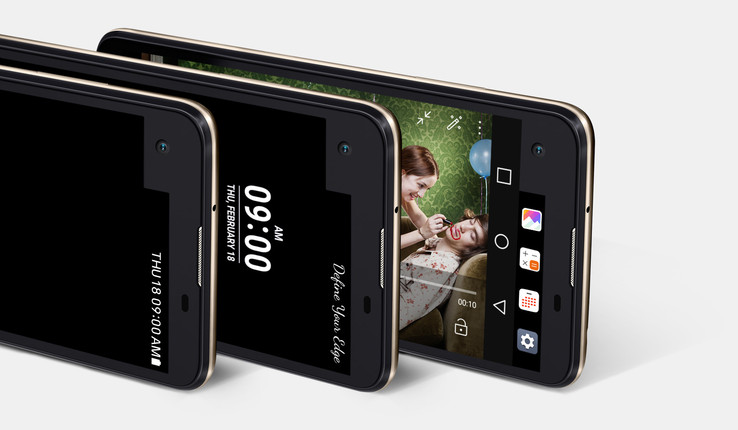
For the original German review, see here.
It is not really an innovative idea to expand the screen of a smartphone slightly. Samsung has also implemented this in its "Edge" devices, and LG itself offers the LG V10 with a "second screen". However, an affordable handset with an additional screen for just below 250 Euros (~$281) is now on the market in the form of LG X Screen K500n.The second screen is situated beside the front camera and displays the time, quick links or notifications, even when apps are running in full screen or the smartphone is on standby.
The handset is part of LG's new X lineup where every smartphone has a special feature: It is the second screen in LG's X Screen, a dual-camera in the X Cam, and more models are planned.
We are not just curious about the differences compared with the considerably pricier LG V10 with a second screen, but also compared with equally priced devices such as ZTE's Blade V7, Huawei's P9 Lite or Honor's 5X. Have cutbacks been made in connectivity in favor of the second screen?
Case
The casing of LG's X Screen does not look very spectacular at a first glance, and it does not reveal that it hides a second screen. An eye-catching exterior, like that of the Galaxy S7 Edge with a screen curved around the edges should not be expected. Then again, LG's X Screen is situated in another price category. The casing is made entirely of plastic, and the edges are rounded so that LG's X Screen is pleasant to hold. It is available in black or white.
At just 120 grams (~4.2 oz), the handset is extremely lightweight. Nevertheless, the stability is satisfactory: The smartphone hardly warps or creaks. However, pressure applied to both front and back become visible in the liquid crystals relatively quickly.
Connectivity
It might be assumed that a second screen would increase production costs and cutbacks are thus made elsewhere. However, this is not evident in terms of connectivity. Although 16 GB of internal storage is standard, the expansion option by up to 2 TB via micro-SD card is a minor highlight. NFC has also been installed. On the other hand, USB OTG is not included. DLNA for Wi-Fi is also supported. The working memory of 2 GB is also category standard, but Huawei's P9 Lite even offers 3 GB.
Software
The almost latest version of Google's operating system, Android 6.0.1, is installed. Its security patch level is that of April 1st 2016. Android 6 adds some new functions to Android smartphones, such as a more extensive app rights management and an energy-saving mode. LG modifies the looks with its own interface. The differences to standard Android are not massive, and thus anyone changing to LG from another manufacturer should find their way round easily.
LG Backup for saving data on the handset or in LG Cloud is preloaded. Data can also be transmitted from another device via Bluetooth. We found the overview of apps that were deleted in the past 24 hours handy. Should something have been uninstalled accidentally, it can be reinstalled quickly.
Communication & GPS
LTE is now standard, even in this price range - and LG's X Screen naturally supports the fastest mobile networking standard currently available. The maximum speed is 150 MBit per second (download) and 50 MBit per second (upload). Naturally, more expensive devices achieve more, but the network has to support that.
The reception in the mobile network was good. At least 3/4 of the signal was displayed indoors and usually 100% outdoors in the LTE network in the well-developed German D2 network.
LG's X Screen uses the Wi-Fi 802.11 b/g/n standards. Thus, browsing in the 5 GHz network is not possible; otherwise, all the important standards are covered. Connecting to the Internet is fast. None of the comparison devices support the even faster 802.11ac standard, but this is not necessary for normal everyday use.
The reception is very good: We had the full signal in the router's direct vicinity, and websites opened relatively fast. At a distance of 10 meters (~33 ft) to the router (FritzBox 6490) and through three walls, we still had 3/4 of the reception strength, and websites still opened just as quickly.
Although the GPS module found satellites indoors, the reception strength was not sufficient to track us. It took a moment in the outdoors, where we were located with an accuracy of 5 to 7 meters (~16 to 23 ft).
We packed LG's X Screen along with Garmin's Edge 500 professional navigation system in our backpack and took both on a ride with our mountain bike to test the GPS module's accuracy. The Runtastic app provided the data analysis. The measured route deviated by only 40 meters (~131 ft). However, it also proved that LG's X Screen sometimes tends to take shortcuts, and simply draws a straight line between two points when the signal is lost. The pro device is considerably more accurate here.
Telephone & Call Quality
LG has modified the phone app's looks, but it largely functions like Google's standard app and is unlikely to puzzle anyone.
The call quality is satisfactory; our call contact could be heard clearly, but with minor distortions. A hum evolves in high volumes. The microphone transmits speech well, even when we speak quietly. The sound also distorts here when we raise our voice.
Cameras
The rear-facing camera in LG's X Screen has a resolution of 13 megapixels and a relatively high aperture of f/2.2. This means that the aperture has a quite high opening by default, allowing it to capture a lot of light. This is naturally an advantage for photos shot in low-light conditions, but bright surfaces quickly overexpose in bright surroundings. This is also the case in the pictures made with LG's X Screen, but interestingly dark areas are not brightened up very well. Photos also tend to quickly look grainy and blur easily. The color reproduction makes a somewhat too warm an impression. The camera's low-light performance is good; the photos look sharper here.
Videos can be recorded at 30 frames per second in Full HD with the primary camera. Occasionally, they make a somewhat grainy impression, but overall, are suitable for occasional use.
The front-facing camera has a generous resolution of 8 megapixels. Bright surfaces also overexpose here, and the pictures quickly look blurred.
We photograph our reference chart for better analysis of focus and color reproduction. This photo looks considerably blurred toward the edges; the sharpness is better in the center, but frayed edges become visible when zoomed in. The color reproduction does not correspond to the reference. Some colors look too saturated and white is not pure.
Accessories & Warranty
Besides the charger and its USB cable, a decent sounding in-ear headset is also inside the box.
LG includes a 24 month warranty on its smartphone.
Input Devices & Handling
In addition to SwiftKey and Google's keyboard, LG's keyboard is also installed. The height of LG's model can be varied and some modifications can be made. A single-handed mode is present, and the keyboard can be divided. Nevertheless, the double assignment of many keys is somewhat too overloaded for our taste. Google's keyboard is more straightforward and clearly arranged. However, this is a matter of preference, and it is always possible to download another keyboard from Google's Play Store.
The touchscreen has a pleasant surface, and is also still very sensitive in its corners. The highlight in terms of handling is, of course, the second screen that is also touch-sensitive. It is implemented as a narrow bar above the screen beside the front camera. Swiping right or left opens quick settings and apps. Notifications are displayed here, and also informs about incoming calls. The user can either answer or decline them here. This functioned well - although the screen is relatively narrow, handling was reliable.
Display
With a size of 5 inches, the primary screen in LG's X Screen has a resolution of 1280x720 pixels. This is now below category average; the comparison devices offer a Full HD panel. Alongside the screen's slightly small dimensions, this still results in an acceptable 294 PPI. In fact the image looks fairly sharp.
The brightness of LG's X Screen cannot compete with its equally priced rivals: With an average of 376 cd/m², the screen is clearly dimmer than that of other models. However, the maximum brightness increases slightly when using the light sensor: We measured 405 cd/m² here. We achieved a maximum brightness of 392 cd/m² in the more practice-relevant APL50 assessment, which corresponds almost exactly to the maximum brightness rate of 392 cd/m² measured in the conventional process. The illumination of 90% is relatively homogeneous.
| |||||||||||||||||||||||||
Brightness Distribution: 90 %
Center on Battery: 392 cd/m²
Contrast: 1452:1 (Black: 0.27 cd/m²)
ΔE ColorChecker Calman: 7.5 | ∀{0.5-29.43 Ø4.78}
ΔE Greyscale Calman: 9.9 | ∀{0.09-98 Ø5}
Gamma: 2.07
CCT: 9704 K
| LG X Screen IPS, 1280x720, 5" | Huawei P9 Lite IPS, 1920x1080, 5.2" | LG V10 Quantum-IPS, 2560x1440, 5.7" | ZTE Blade V7 IPS, 1920x1080, 5.2" | Honor 5X IPS, 1920x1080, 5.5" | |
|---|---|---|---|---|---|
| Screen | -3% | 22% | -15% | 14% | |
| Brightness middle (cd/m²) | 392 | 505 29% | 450 15% | 409 4% | 535 36% |
| Brightness (cd/m²) | 376 | 468 24% | 431 15% | 411 9% | 521 39% |
| Brightness Distribution (%) | 90 | 88 -2% | 93 3% | 96 7% | 85 -6% |
| Black Level * (cd/m²) | 0.27 | 0.74 -174% | 0.22 19% | 0.38 -41% | 0.43 -59% |
| Contrast (:1) | 1452 | 682 -53% | 2045 41% | 1076 -26% | 1244 -14% |
| Colorchecker dE 2000 * | 7.5 | 4.1 45% | 5.18 31% | 9.4 -25% | 4.88 35% |
| Colorchecker dE 2000 max. * | 13.1 | 5.8 56% | 10.39 21% | 17.6 -34% | 8.66 34% |
| Greyscale dE 2000 * | 9.9 | 4.9 51% | 6.94 30% | 11.6 -17% | 5.2 47% |
| Gamma | 2.07 106% | 2.5 88% | 2.24 98% | 2.25 98% | 2.26 97% |
| CCT | 9704 67% | 7116 91% | 8091 80% | 9597 68% | 7766 84% |
* ... smaller is better
We have to praise the low black level of 0.27 cd/m² (0.26 cd/m² in APL50). Thus, dark areas look deep and truly black. This also leads to a good contrast ratio of 1452:1.
Then again, the color accuracy that we analyze with the CalMAN software and spectrophotometer is unsatisfactory. A heavy bluish tint is visible to the naked eye; the aberrations to the reference color space are very high.
Display Response Times
| ↔ Response Time Black to White | ||
|---|---|---|
| 29 ms ... rise ↗ and fall ↘ combined | ↗ 13 ms rise | |
| ↘ 16 ms fall | ||
| The screen shows relatively slow response rates in our tests and may be too slow for gamers. In comparison, all tested devices range from 0.1 (minimum) to 240 (maximum) ms. » 76 % of all devices are better. This means that the measured response time is worse than the average of all tested devices (20.2 ms). | ||
| ↔ Response Time 50% Grey to 80% Grey | ||
| 43 ms ... rise ↗ and fall ↘ combined | ↗ 21 ms rise | |
| ↘ 23 ms fall | ||
| The screen shows slow response rates in our tests and will be unsatisfactory for gamers. In comparison, all tested devices range from 0.165 (minimum) to 636 (maximum) ms. » 70 % of all devices are better. This means that the measured response time is worse than the average of all tested devices (31.6 ms). | ||
Screen Flickering / PWM (Pulse-Width Modulation)
| Screen flickering / PWM not detected | |||
In comparison: 53 % of all tested devices do not use PWM to dim the display. If PWM was detected, an average of 8111 (minimum: 5 - maximum: 343500) Hz was measured. | |||
LG's X Screen does a decent job outdoor. However, the screen's brightness is too low in very bright sunlight to recognize any content. However, the glossy screen is quite legible in a shaded place.
Thanks to the IPS panel, the viewing angles are generous and the image is recognizable from the sides even in very flat angles. Brightness shifts are, however, visible.
Performance
With a Qualcomm Snapdragon 410 MSM8916, LG's X Screen is adequately equipped for the mid-range sector. It clocks at 1.4 GHz in our review sample, and has four cores. The SoC is also 64-bit capable. However, Honor's 5X proves that more is possible for this price with its higher-performance Qualcomm Snapdragon 616 MSM8939v2. The other equally-priced comparison devices are also equipped with faster SoCs.
This becomes obvious in the system and performance benchmarks: LG's X Screen usually lags behind; Huawei's P9 Lite in particular is much faster. The user interface runs smoothly in practice, but occasional lags or prolonged loading times are very evident.
The graphics solution, an Adreno 306 clocked at 450 MHz, is no match for the comparison devices and has to be satisfied with the last place.
LG's X Screen also has a hard time competing with its rivals in Internet browsing. It also comes in last in the benchmarks here. It was noticed that websites sometimes needed longer to open than in other devices in everyday use.
The internal storage in our review sample does not do a bad job, at all especially in write. However, the read speeds are relatively slow. We tested the micro-SD slot with our Toshiba Exceria Pro M401 reference card: LG's X Screen was fast, and outperforms the comparison devices in both read and write.
However, it is not possible to move apps to the SD card or to format the SD card as an internal storage.
| AnTuTu v6 - Total Score (sort by value) | |
| LG X Screen | |
| Huawei P9 Lite | |
| Honor 5X | |
| ZTE Blade V7 | |
| LG V10 | |
| Geekbench 3 | |
| 64 Bit Single-Core Score (sort by value) | |
| LG X Screen | |
| Huawei P9 Lite | |
| Honor 5X | |
| ZTE Blade V7 | |
| LG V10 | |
| 64 Bit Multi-Core Score (sort by value) | |
| LG X Screen | |
| Huawei P9 Lite | |
| Honor 5X | |
| ZTE Blade V7 | |
| LG V10 | |
| 3DMark | |
| 1280x720 offscreen Ice Storm Unlimited Score (sort by value) | |
| LG X Screen | |
| Huawei P9 Lite | |
| Honor 5X | |
| ZTE Blade V7 | |
| LG V10 | |
| 1280x720 offscreen Ice Storm Unlimited Graphics Score (sort by value) | |
| LG X Screen | |
| Huawei P9 Lite | |
| Honor 5X | |
| ZTE Blade V7 | |
| LG V10 | |
| 1280x720 offscreen Ice Storm Unlimited Physics (sort by value) | |
| LG X Screen | |
| Huawei P9 Lite | |
| Honor 5X | |
| ZTE Blade V7 | |
| LG V10 | |
| 2560x1440 Sling Shot OpenGL ES 3.0 (sort by value) | |
| LG X Screen | |
| Huawei P9 Lite | |
| Honor 5X | |
| ZTE Blade V7 | |
| LG V10 | |
| 2560x1440 Sling Shot OpenGL ES 3.0 Graphics (sort by value) | |
| LG X Screen | |
| Huawei P9 Lite | |
| Honor 5X | |
| ZTE Blade V7 | |
| LG V10 | |
| 2560x1440 Sling Shot OpenGL ES 3.0 Physics (sort by value) | |
| LG X Screen | |
| Huawei P9 Lite | |
| Honor 5X | |
| ZTE Blade V7 | |
| LG V10 | |
| GFXBench (DX / GLBenchmark) 2.7 | |
| T-Rex Onscreen (sort by value) | |
| LG X Screen | |
| Huawei P9 Lite | |
| Honor 5X | |
| ZTE Blade V7 | |
| LG V10 | |
| 1920x1080 T-Rex Offscreen (sort by value) | |
| LG X Screen | |
| Huawei P9 Lite | |
| Honor 5X | |
| ZTE Blade V7 | |
| LG V10 | |
| GFXBench 3.0 | |
| on screen Manhattan Onscreen OGL (sort by value) | |
| LG X Screen | |
| Huawei P9 Lite | |
| Honor 5X | |
| ZTE Blade V7 | |
| LG V10 | |
| 1920x1080 1080p Manhattan Offscreen (sort by value) | |
| LG X Screen | |
| Huawei P9 Lite | |
| Honor 5X | |
| ZTE Blade V7 | |
| LG V10 | |
| PCMark for Android - Work performance score (sort by value) | |
| LG X Screen | |
| Huawei P9 Lite | |
| Honor 5X | |
| ZTE Blade V7 | |
| LG V10 | |
| Octane V2 - Total Score (sort by value) | |
| LG X Screen | |
| Huawei P9 Lite | |
| Honor 5X | |
| ZTE Blade V7 | |
| LG V10 | |
| Mozilla Kraken 1.1 - Total (sort by value) | |
| LG X Screen | |
| Huawei P9 Lite | |
| Honor 5X | |
| ZTE Blade V7 | |
| LG V10 | |
| JetStream 1.1 - Total Score (sort by value) | |
| LG X Screen | |
| Huawei P9 Lite | |
| Honor 5X | |
| ZTE Blade V7 | |
| LG V10 | |
| AndroBench 3-5 | |
| Sequential Read 256KB (sort by value) | |
| LG X Screen | |
| Huawei P9 Lite | |
| Honor 5X | |
| ZTE Blade V7 | |
| LG V10 | |
| Sequential Write 256KB (sort by value) | |
| LG X Screen | |
| Huawei P9 Lite | |
| Honor 5X | |
| ZTE Blade V7 | |
| LG V10 | |
| Random Read 4KB (sort by value) | |
| LG X Screen | |
| Huawei P9 Lite | |
| Honor 5X | |
| ZTE Blade V7 | |
| LG V10 | |
| Random Write 4KB (sort by value) | |
| LG X Screen | |
| Huawei P9 Lite | |
| Honor 5X | |
| ZTE Blade V7 | |
| LG V10 | |
| Sequential Read 256KB SDCard (sort by value) | |
| LG X Screen | |
| Huawei P9 Lite | |
| ZTE Blade V7 | |
| Sequential Write 256KB SDCard (sort by value) | |
| LG X Screen | |
| Huawei P9 Lite | |
| ZTE Blade V7 | |
* ... smaller is better
Games
LG's X Screen copes quite well with games. The second screen is handy here since calls and notifications are displayed there, and they do not interrupt the game if the user does not want them to. We tested the graphically demanding racing game "Asphalt 8: Airborne" as well as "Angry Birds" that is easier on the graphics card. Both games ran smoothly and were still playable in high settings. However, they took quite long to load, and stutters sometimes occurred in the menu of the considerably more demanding racing game.
Controlling the games via the position sensor and touchscreen functioned impeccably, reliably and accurately.
Emissions
Temperature
LG's X Screen is actually always cool to touch. The smartphone's temperature climbs to a maximum of 37.3 degrees Celsius (~99 degrees Fahrenheit) in the upper back area during load. This temperature decreases considerably downward on the back; the front remains homogeneously warm. Although all temperature increases are slightly noticeable, they are not unpleasant.
The smartphone warms up only in the lower center front while idling. The temperature of 33.8 degrees Celsius (~93 degrees Fahrenheit) is hardly noticeable and restricted to one area.
(+) The maximum temperature on the upper side is 36.8 °C / 98 F, compared to the average of 35.2 °C / 95 F, ranging from 21.9 to 247 °C for the class Smartphone.
(+) The bottom heats up to a maximum of 37.3 °C / 99 F, compared to the average of 34 °C / 93 F
(+) In idle usage, the average temperature for the upper side is 30.8 °C / 87 F, compared to the device average of 32.9 °C / 91 F.
Speaker
The Pink Noise diagram already hints that the trebles of the speaker in the lower edge of LG's X Screen are heavily overemphasized. In fact, high frequencies are almost unpleasant to the ear. The sound makes a thin and tinny impression, even when rendering voice. Low tones are virtually non-existent. Using a headset or a speaker connected via Bluetooth or jack should be preferred; the sound is much better here.
Energy Management
Power Consumption
Unfortunately, we could not determine any reasonable power consumption rates with our instrument.
Battery Runtime
The battery in LG's X Screen manages 9:13 hours in the Wi-Fi test. This is a decent rate, especially considering the small-sized battery of 2300 mAh or 8.7 Wh. The battery is fixed and cannot be replaced. LG's X Screen should last a full work day, which is confirmed by our tests. Huawei's P9 Lite and Honor's 5X can serve with longer runtimes.
| LG X Screen 2300 mAh | Huawei P9 Lite 3000 mAh | ZTE Blade V7 2540 mAh | LG V10 3000 mAh | Honor 5X 3000 mAh | |
|---|---|---|---|---|---|
| Battery runtime | 35% | -5% | 17% | 1% | |
| Reader / Idle (h) | 16.3 | 23.4 44% | 28.3 74% | 17.6 8% | |
| WiFi v1.3 (h) | 9.2 | 10.1 10% | 8.7 -5% | 5.9 -36% | 10.7 16% |
| Load (h) | 3 | 4.5 50% | 3.4 13% | 2.4 -20% | |
| H.264 (h) | 9.5 | 9 | 10 |
Pros
Cons
Verdict
The second screen in LG's X Screen is a nice feature and an eye-catcher, particularly in this price range. However, LG had to make cutbacks in other places for this, and this is unfortunately noticed everywhere in LG's X Screen. The speaker squeals with treble-heavy sound, the screen is below-average for the category and is not very bright.
Of course, the smartphone has its good sides: The reception is decent, the casing relatively stable, and DLNA and NFC are on board. Touchscreen control functions reliably, and it is also exemplary that LG preloads the latest Android version.
Users who do not want to forgo a second screen in this price range will have to accept clear restrictions in other aspects.
Overall, we would only recommend LG's X Screen to users who really deem a second screen as the main purchase reason. Otherwise, there are many much better offers with higher resolution screens and better cameras in this price range.
LG X Screen
- 06/13/2016 v5.1 (old)
Florian Wimmer




